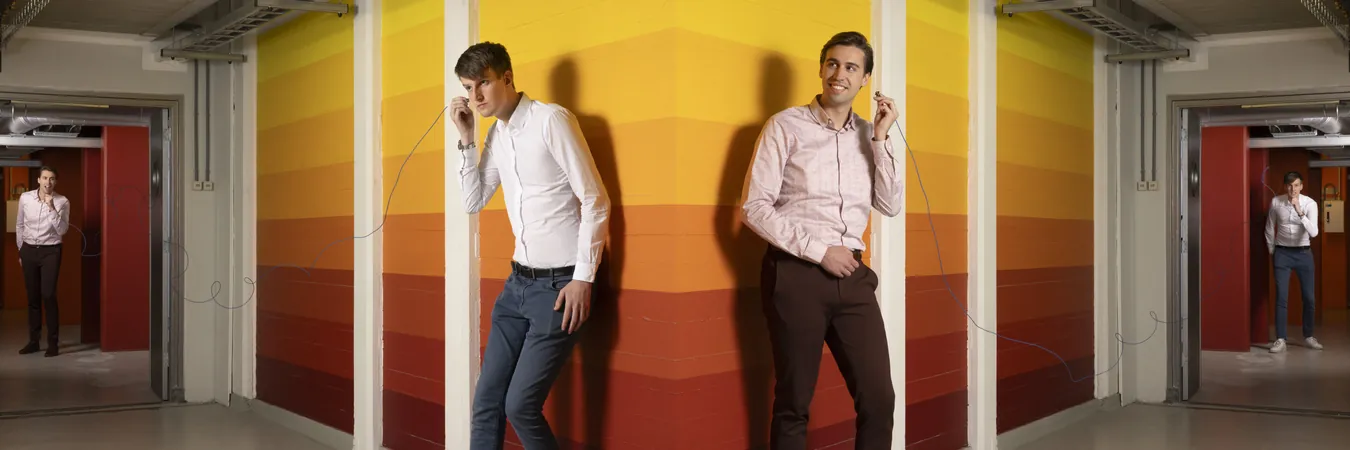
Groundbreaking 25 km Quantum Network Link Between Dutch Cities: A Leap Towards the Quantum Internet!
2024-10-30
Author: Rajesh
In an extraordinary leap forward for quantum computing, an international research team led by QuTech has successfully established a network connection between quantum processors spanning a distance of 25 kilometers across the Dutch cities of Delft and The Hague. This remarkable achievement signifies a major shift from previous laboratory experiments towards a potential future where a quantum internet could revolutionize communication and computation.
The researchers made a significant breakthrough by developing independent operating nodes that integrate seamlessly with existing optical internet fiber networks. This 25 km quantum link is a notable milestone, illustrating the potential for quantum technologies to operate in real-world environments, beyond the confines of the laboratory. Results of this pioneering study have been published in the esteemed journal Science Advances.
What Makes Quantum Internet Revolutionary?
The current internet facilitates the sharing of classical information, or bits—essentially, sequences of 0s and 1s. However, a quantum internet stands to change the game entirely by transmitting quantum information, or qubits. Qubits can exist in multiple states simultaneously (superposition), and they can be entangled, creating instant correlations regardless of the distance between them. This characteristic alone provides groundbreaking opportunities for secure communications and advanced computational power.
Imagine being able to transmit sensitive financial data or personal medical information with enhanced security, or connecting quantum computers across vast distances to bolster processing capabilities—all while guaranteeing user privacy. The implications are immense, making the development of quantum networks a global priority.
Going Beyond Laboratory Boundaries
Led by Ronald Hanson at QuTech—a collaboration between TU Delft and TNO—the team has buoyed efforts in quantum network research after previously achieving the first multi-node quantum network within a laboratory setting. “This project sets a record for creating quantum entanglement over metropolitan distances,” Hanson noted, emphasizing the significance of connecting quantum processors situated in separate cities for the first time.
Transitioning from lab conditions to practical applications posed a variety of challenges, including designing systems that would allow nodes to operate independently over long distances while mitigating the effects of photon loss. The team employed innovative techniques to confirm successful entanglement creation, which was crucial for covering such an expansive distance.
Stability Challenges Compared to Celestial Accuracy!
To counter the issue of photon loss, the researchers implemented a photon-efficient protocol requiring fine stabilization of the connecting fiber link. Arian Stolk, a co-author of the study, likened the effort to maintaining a consistent distance between Earth and the moon within mere millimeters—a feat of astonishing precision given the 25 km span.
“This work showcases our ability to establish reliable entanglement between two operational quantum network nodes using diamond spin qubits,” Stolk commented. The nodes are linked through a midpoint station via optical fiber, enabling the delivery of predefined entangled states.
The project's success was further bolstered by collaboration with numerous experts and institutions, including Fraunhofer ILT, which created essential components such as a novel quantum frequency converter. Other contributors included OPNT for high-stability timing hardware, Element Six for synthetic diamond materials, Toptica for stable laser solutions, and KPN for providing critical fiber infrastructure.
Towards A European Quantum Internet Era!
This accomplishment is more than just a technical triumph; it lays a robust foundation for what could be Europe’s next big advancement in digital infrastructure. Jesse Robbers, Director of Industry & Digital Infrastructure at Quantum Delta NL, remarked, "Demonstrating leadership in developing the backbone of our future Digital Infrastructure is crucial for both national and European strategies."
The methodologies and architecture developed through this project could be applied to next-generation qubit platforms currently in research stages. This suggests a paradigm shift as conventional internet infrastructure is harnessed for quantum applications, opening new avenues towards establishing a fully functional quantum internet.
In conclusion, this critical step not only emphasizes the transition from laboratory research to field implementation but also ignites excitement about the potential of metropolitan-scale quantum networks. As Ronald Hanson puts it, "This work marks the first exploration of quantum processor networks at scale, solidifying our journey towards the era of quantum communication!"
Stay tuned as this pioneering project heralds an astonishing future for global communication!



 Brasil (PT)
Brasil (PT)
 Canada (EN)
Canada (EN)
 Chile (ES)
Chile (ES)
 Česko (CS)
Česko (CS)
 대한민국 (KO)
대한민국 (KO)
 España (ES)
España (ES)
 France (FR)
France (FR)
 Hong Kong (EN)
Hong Kong (EN)
 Italia (IT)
Italia (IT)
 日本 (JA)
日本 (JA)
 Magyarország (HU)
Magyarország (HU)
 Norge (NO)
Norge (NO)
 Polska (PL)
Polska (PL)
 Schweiz (DE)
Schweiz (DE)
 Singapore (EN)
Singapore (EN)
 Sverige (SV)
Sverige (SV)
 Suomi (FI)
Suomi (FI)
 Türkiye (TR)
Türkiye (TR)
 الإمارات العربية المتحدة (AR)
الإمارات العربية المتحدة (AR)